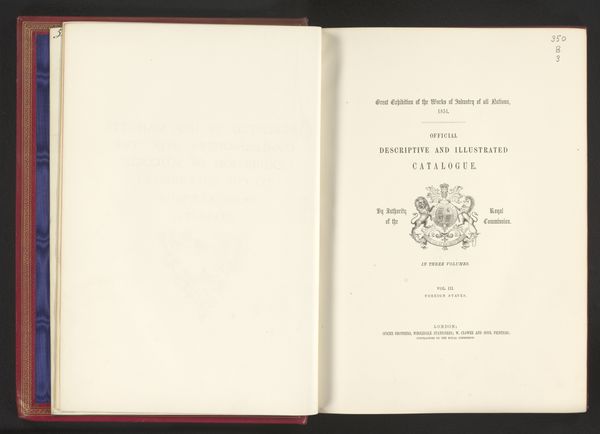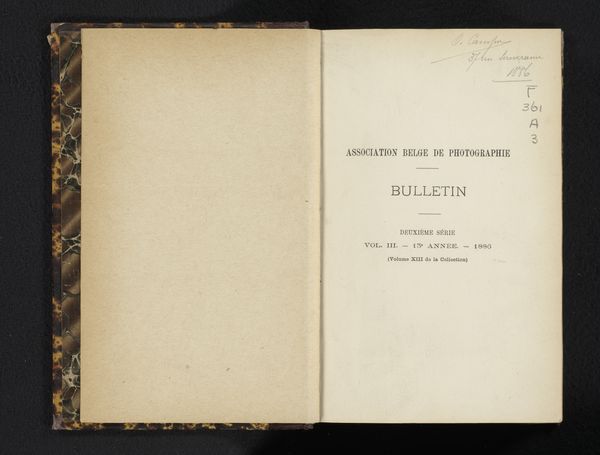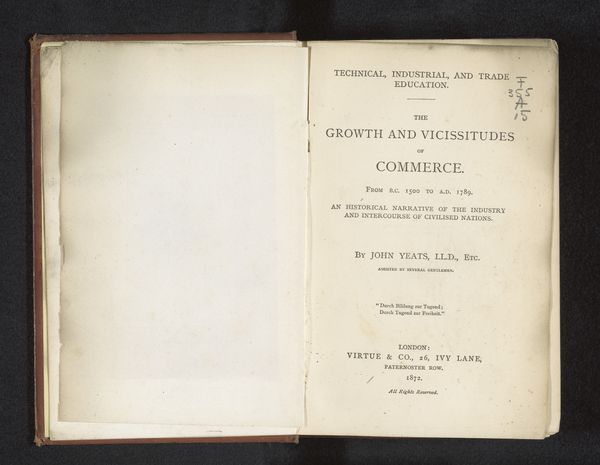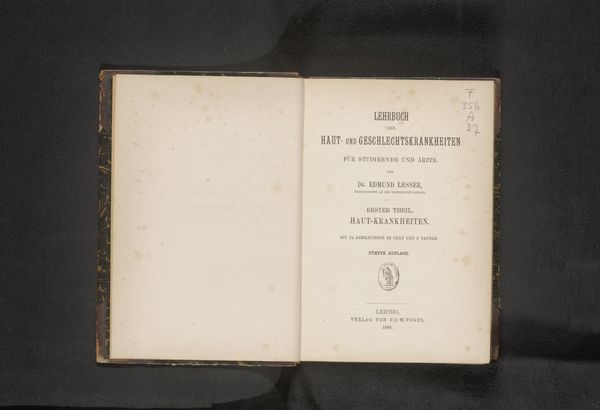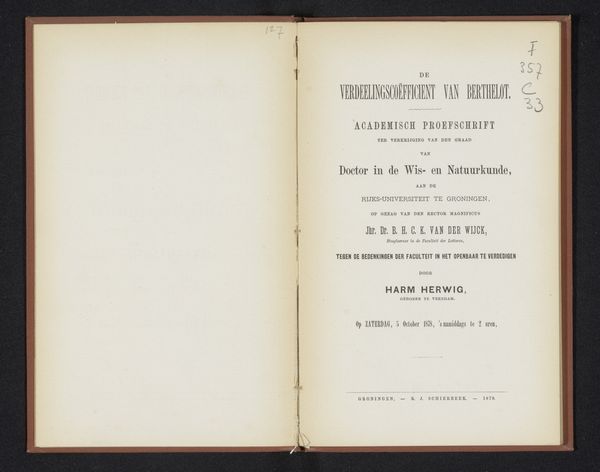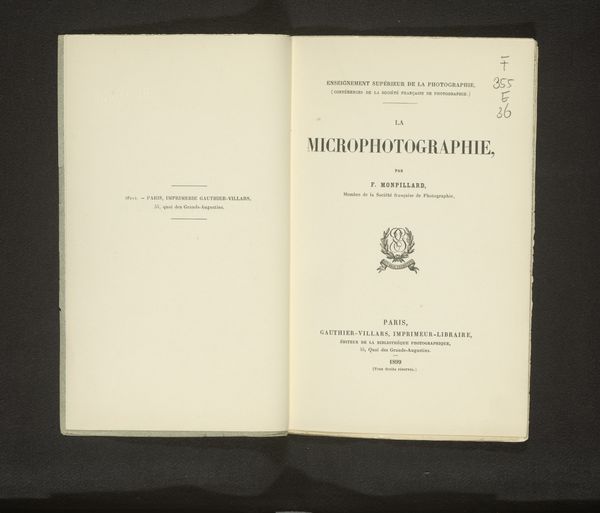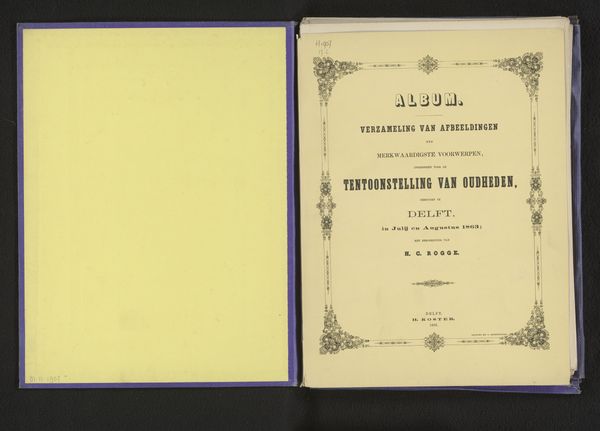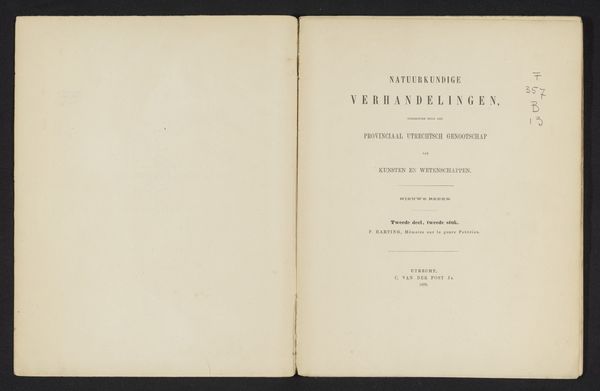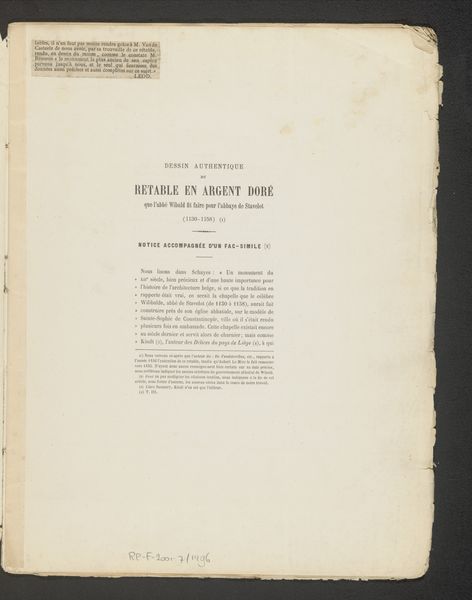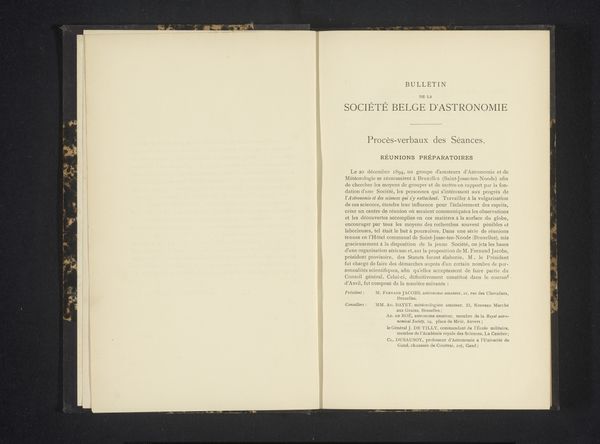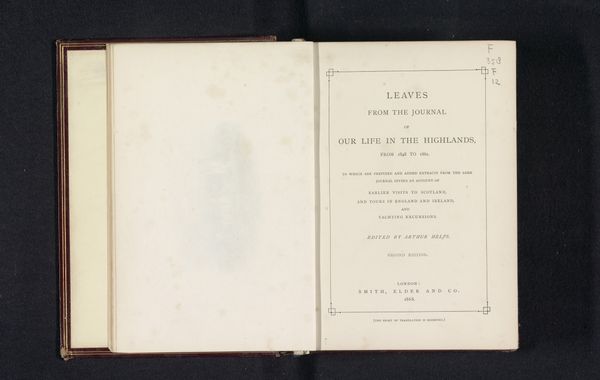
print, textile, typography
# print
#
textile
#
typography
Dimensions: height 364 mm, width 279 mm, thickness 51 mm
Copyright: Rijks Museum: Open Domain
Editor: Here we have "First Report of the Commissioners for the Exhibition of 1851," printed in 1852 by William Clowes and Sons. It's striking how this formal document is presented, like a treasured object, complete with textile details and careful typography. What do you see in this piece, beyond the official record? Curator: I see a potent symbol of Victorian ambition and its relationship to global power dynamics. The Great Exhibition was, in many ways, a celebration of British industrial and colonial prowess. Consider, whose stories were amplified within that space, and whose were marginalized? The "report" itself, through its typography and lavish presentation, subtly reinforces the authority of the commissioners. Editor: So, you're saying that the book itself becomes an artifact of power? The beauty distracts us? Curator: Precisely. The very act of creating this meticulously printed report, bound with what looks like high-quality textile, becomes a performance of authority. It asks us to consider the political economy embedded within every object. The typography itself, while elegant, served to communicate specific power structures. Editor: That's fascinating. I hadn't considered how even the design choices reflect and perpetuate larger social narratives. It makes you wonder about the narratives that were deliberately left out. Curator: Exactly! This isn’t just a document; it's a carefully constructed statement, ripe for deconstruction. How do seemingly neutral presentations of data bolster existing hierarchies? Editor: This conversation has shifted my perspective completely. I came in seeing just a historical document. Curator: And now you recognize it as a battleground of ideologies! Every detail invites further inquiry into the era’s complex social fabric.
Comments
No comments
Be the first to comment and join the conversation on the ultimate creative platform.
